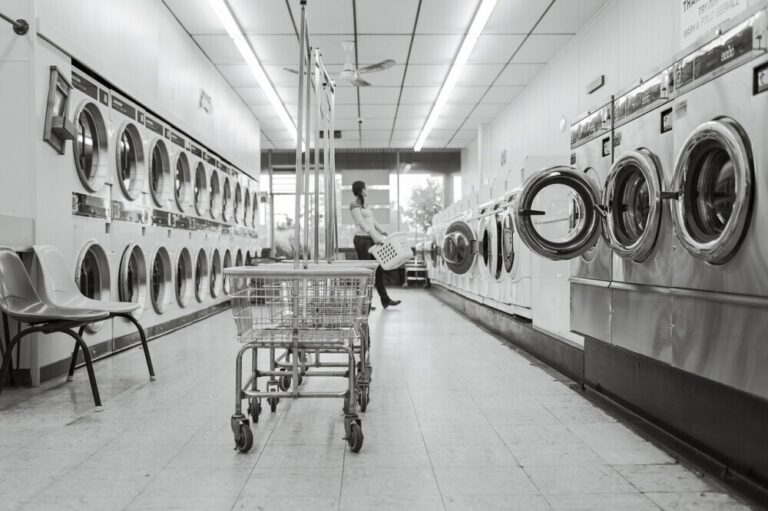Introduction
Money laundering is a massive problem in the global financial system. Banks, credit unions, and fintech companies get targeted all the time because they manage the flow of money, giving bad actors a sneaky way to hide illegal profits. Financial institutions aren’t just at risk—they’re also responsible for spotting and blocking these activities to keep the financial system safe. In this article, we will discuss how financial institutions detect and prevent money laundering.
Financial institutions are legally required to fight money laundering. Laws like the Bank Secrecy Act in the U.S. and similar rules worldwide put these organizations as the first line of defense. The job is to balance catching criminals, making regulators happy, and keeping things running smoothly. Detecting and preventing laundering brings together tech, policy, and people, all working on the same team. That’s exactly what we’re breaking down here.

Table of Contents
Understanding the Money Laundering Risk Landscape
How Financial Institutions Detect And Prevent Money Laundering
Some types of financial institutions get hit harder than others. Retail banks, investment firms, money service businesses, and crypto exchanges are particularly at risk. Each one handles big chunks of transactions, often moving cash across borders. This wide reach gives money launderers more places to slip dirty funds through and make them appear clean.
The threats come from organized crime rings, terrorists looking to fund attacks, corrupt officials hiding bribes, and even individuals dodging tax bills. These crimes aren’t just pulled off by small-time crooks; they often involve criminal networks or clever tax cheats wiring money through multiple accounts. Breaking up large sums into tiny pieces or splitting them across banks creates complex trails that are tough to untangle.
To keep up, most financial institutions use a risk-based approach, as recommended by the Financial Action Task Force (FATF) guidelines. This means focusing on areas with the highest potential for trouble—such as new customers from high-risk countries or businesses that handle lots of cash—and pouring more resources into monitoring those pockets of risk.
Know Your Customer (KYC) and Customer Due Diligence (CDD)
KYC forms the backbone of anti-money laundering (AML) efforts. Before letting someone open an account, banks require official identification, proof of address, details about the source of funds, and info on who really owns a company (beneficial ownership). This whole process is called Customer Due Diligence, and it doesn’t end when the account is set up.
Certain customers need extra scrutiny. Anyone considered high-risk—such as politically exposed persons (PEPs), those with offshore accounts, or folks from sketchy regions—gets put through Enhanced Due Diligence (EDD). This means checking backgrounds more deeply and monitoring their transactions with even more care.
Staying sharp over time is vital. Banks can’t just relax after the first check—continuous monitoring of customer activity is essential. If someone’s account behavior suddenly changes, or transactions don’t match their known income, that’s a red flag. Ongoing KYC and CDD procedures help financial firms catch problems early.
How Transaction Monitoring Systems Work
Transaction monitoring systems act like digital watchdogs; these automated tools scan millions of transactions, flagging anything unusual or out of place with a customer’s past behavior. The software sorts through patterns—like a flurry of small deposits just under the reporting limits, rapid fire transfers between countries, or a shop clerk suddenly wiring large amounts abroad.
- Structuring deposits: Making many small deposits to dodge reporting requirements.
- Speedy international transfers: Zipping money rapidly across accounts worldwide.
- Unusual transactions: For example, a retail worker suddenly sending large amounts overseas.
Each alert comes with a risk score. Higher risk? Compliance teams investigate right away. This triage system keeps staff from drowning in pointless alerts and focuses their energy where it’s most needed.
Suspicious Activity Reporting (SARs)
Reporting suspicious activity is required by law. In the U.S., the Bank Secrecy Act lays out the rules, while other countries have their own. Staff on the frontlines—like tellers and managers—get trained to notice odd customer behavior and pass their concerns to compliance pros.
Once a Suspicious Activity Report (SAR) is filed, it’s sent to government authorities. Law enforcement uses these reports to track down criminal schemes and investigate further. SARs are essential in helping authorities find patterns, even if a single transaction doesn’t seem like a big deal.
Advanced Technology in AML Detection
Classic methods just can’t keep up with the new tricks launderers use. Artificial intelligence and machine learning are now standard tools in AML systems. These technologies pick out patterns hidden in massive piles of data. AI can spot subtle changes in activity over years, linking accounts or transactions that would otherwise go unnoticed.
The rise of cryptocurrencies adds a new twist. To track crypto, institutions use blockchain analytics tools, digging deep into digital ledgers to see where coins come from and where they go. This matters a lot because crypto can jump from one wallet to another in no time, often hiding its real owner along the way.
Biometric checks like facial recognition and fingerprints are becoming big for digital account setups. These steps make it harder for criminals to use fake identities. RegTech (regulatory technology) brings all these solutions together, but rolling out new tools can be expensive and tough to manage day-to-day.
Internal Controls and Building a Compliance Culture
Behind the scenes, compliance teams and AML departments make sure everything’s running tight. These folks write policies, chase down bad behavior, and keep the bank on the right side of international and local rules. Regular training gets everyone up to speed on fresh red flags, while outside audits help doublecheck that systems actually work as planned.
Top brass—board members and C-suite execs—set the tone for the whole company. If leadership takes AML seriously, others follow suit. This shows up in everything from strong rules to putting money behind new technology and sending a clear “no tolerance” message.
Collaboration and Information Sharing
Keeping money laundering out of the system isn’t something one company or even one country can do alone. Public-private partnerships help banks team up with government agencies. In the U.S., FinCEN Exchange links up financial firms and law enforcement. Around the globe, groups like FATF and the Egmont Group make sharing intelligence possible and let partners talk about new risks together.
Better info-sharing knocks down criminal networks faster, especially when launderers switch up countries or banks. Still, banks have to walk a fine line—privacy laws put limits on what data they can share, and who they can share it with. Trust and guardrails keep everyone out of legal hot water.
Big Challenges in Detecting and Preventing Money Laundering
Plenty of thorny issues come up in this job. Privacy rules keep getting stricter, but banks still have to report and investigate suspect activity. Monitoring software is powerful, but not perfect. Staff often dig through piles of false positives—dodgy alerts that turn out to mean nothing. It’s time consuming and expensive to clear each one.
New players like mobileonly banks, cuttingedge fintechs, and DeFi (decentralized finance) tools just add layers. Crooks move fast to exploit fresh platforms before there’s enough oversight. As regulations jump to catch up, financial firms end up spending more on new tech, more staff, and a constant stream of training sessions.
Consequences of Getting It Wrong
If a bank drops the ball on AML, the fallout can be massive. Fines sometimes reach into the hundreds of millions, like the well-known cases involving HSBC and Danske Bank. These fines hit profits, and even worse, they make customers nervous and draw extra heat from regulators. Sometimes, bank staff and managers can even face charges if they ignore signs or drag their feet handling suspicious activity.
Keeping the Financial System Clean Going Forward
The role of banks and financial institutions as gatekeepers is more important than ever. Money launderers change their tactics all the time, which means the ways to catch and stop them have to keep getting stronger too. Staying sharp, trying new technology, and teaming up with other banks or government pushes criminal money out of the global system. For anyone in these jobs today, battling money laundering isn’t a one-off—it’s an ongoing job worth doing right every single day.
If you feel like you need to report a crime involving money laundering, please don’t hesitate to contact your local law enforcement or, if in the United States, reach out to the Homeland Security Investigations or the Federal Bureau of Investigations.
Contact Us:
If you need to contact us for any reason, please feel free to do so here!






